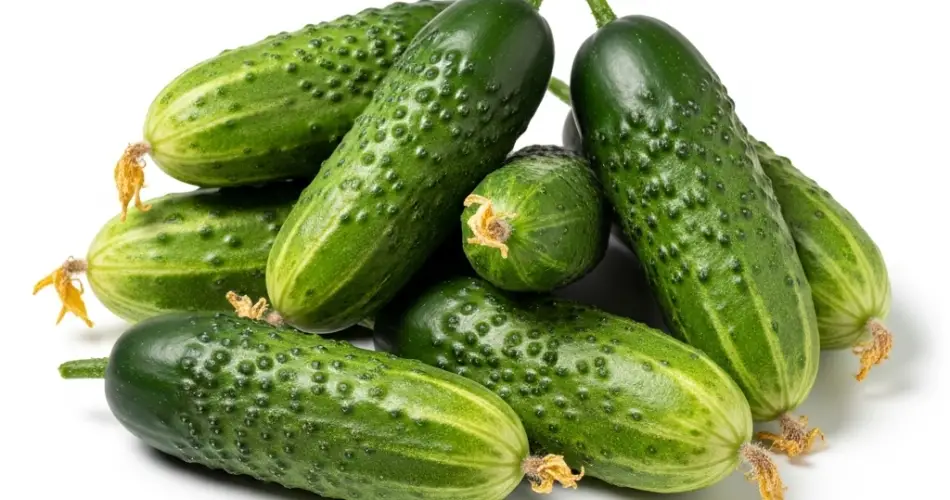Seedless cucumbers are a favorite among gardeners and home cooks alike. They’re crisp, juicy, and perfect for fresh salads, pickling, or even snacking straight from the vine. But what many people don’t realize is that growing cucumbers without seeds isn’t just about luck—it comes down to choosing the right variety and providing the right growing conditions.
Here’s everything you need to know to grow your own seedless cucumbers at home, including the varieties to choose, tips for encouraging fruit development, and how to avoid pollination to keep cucumbers seed-free and tender.
What Makes a Cucumber Seedless?
Seedless cucumbers, also called “burpless” or “European” cucumbers, are varieties that produce fruit without pollination. This natural process is known as parthenocarpy, which allows cucumbers to grow without developing seeds. These varieties are bred specifically for this purpose and tend to have thinner skins, milder flavor, and no bitter aftertaste.
However, even seedless varieties can develop seeds if pollinated by bees or wind. That’s why protecting these plants from pollination is key to growing truly seedless cucumbers.
Best Varieties for Seedless Cucumbers
To grow seedless cucumbers successfully, choose parthenocarpic varieties, which are self-fruiting and don’t require pollination. Some popular types include:
-
Telegraph Improved
-
Tyria
-
Diva
-
Sweet Success
-
Tasty Green
-
Picolino
These varieties are commonly grown in greenhouses but can also thrive outdoors in the right conditions.
Growing Conditions for Juicy, Seedless Cucumbers
Seedless cucumbers need the same basic conditions as regular cucumbers—warm temperatures, full sun, and rich, well-draining soil. However, since they are often grown without pollinators, they do best in protected environments like greenhouses or enclosed garden beds.
1. Temperature and Light
Cucumbers are warm-weather plants. Seedless varieties grow best when daytime temperatures are between 70–85°F (21–29°C) and nighttime temperatures don’t fall below 60°F (15°C). Choose a sunny location where your cucumbers will get at least 6–8 hours of sunlight daily.
2. Soil and Fertilization
Use loose, fertile soil enriched with compost or well-rotted manure. A slightly acidic to neutral pH (around 6.0–7.0) is ideal. Fertilize with a balanced vegetable fertilizer during early growth, switching to a high-potassium blend once flowers appear to encourage fruit development.
3. Watering
Cucumbers are mostly water, so consistent moisture is key. Keep the soil evenly moist but not soggy. Drip irrigation or soaker hoses are ideal, as they prevent splashing that could lead to fungal issues. Water early in the day to allow foliage to dry before nightfall.
How to Prevent Pollination
Even seedless cucumber varieties will develop seeds if pollinated. To avoid this:
-
Grow them in a greenhouse or under row covers to keep bees and insects out.
-
Avoid planting regular cucumber varieties nearby, as cross-pollination can occur.
-
Use netting or mesh to physically protect outdoor plants from pollinators.
-
Remove any male flowers if they appear. Parthenocarpic varieties don’t require male flowers, but sometimes they produce them in stress conditions.
If you’re growing outdoors and complete isolation isn’t possible, don’t worry. While some seed development might occur, the fruit will still be largely seedless compared to standard varieties.
Trellising for Better Fruit
Cucumbers benefit from being grown vertically. Trellising improves air circulation, reduces disease, and keeps the fruits straight and clean. Use a sturdy trellis or cage system, and guide vines as they grow.
Regular pruning can also help the plant focus energy on fruit production. Remove yellowing leaves and side shoots if they become crowded.
Harvesting Seedless Cucumbers
Pick cucumbers when they reach their full size but before they begin to yellow or develop ridges. This is usually about 8–12 inches (20–30 cm) long, depending on the variety. Harvest regularly to encourage more fruiting.
Handle cucumbers gently to avoid bruising, and store them in the refrigerator for up to a week. They’re best enjoyed fresh for maximum juiciness and crunch.
Common Problems and Tips
-
Bitter flavor? This is often due to irregular watering or high temperatures. Keep soil consistently moist and avoid plant stress.
-
Curved or misshapen fruits? Often a sign of pollination in parthenocarpic varieties or uneven watering.
-
Powdery mildew? Improve airflow and avoid overhead watering. Use neem oil or a natural fungicide if needed.
Final Thoughts
Growing juicy, seedless cucumbers isn’t complicated once you know the secret: it’s all about choosing the right variety and controlling pollination. With proper care and attention, your garden can produce sweet, crisp cucumbers that are free of seeds and full of flavor.
Whether you’re slicing them into salads, adding them to sandwiches, or enjoying them straight off the vine, these cucumbers are sure to become a favorite in your home garden.



